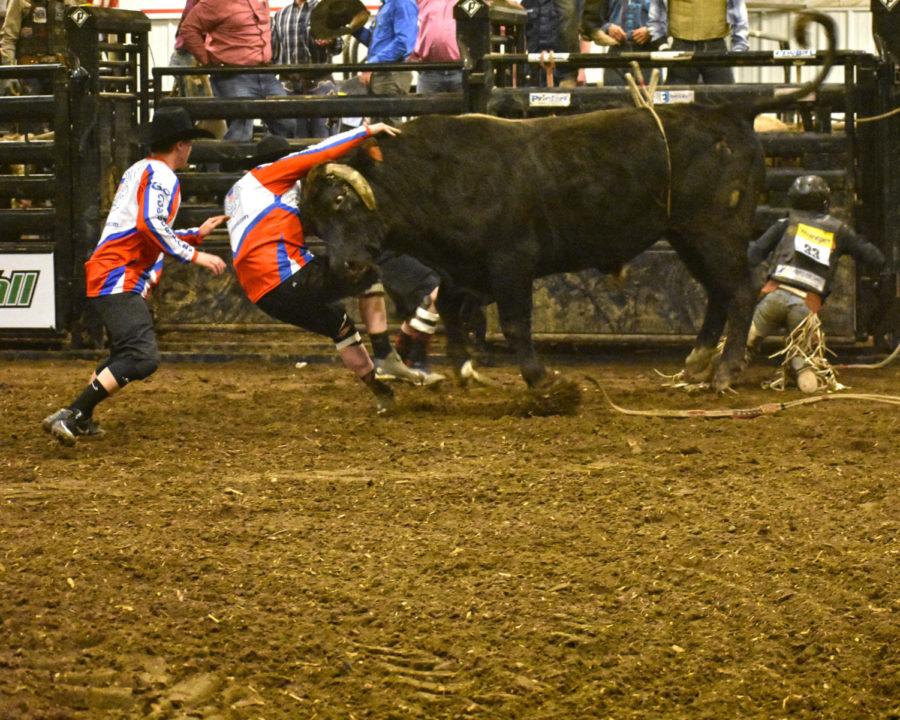Rodeo Club creates connections
October 29, 2018
Athletes from across the Great Plains came to compete in the annual Cyclone Stampede Rodeo two weeks ago.
Iowa State’s rodeo has been taking place for 55 years and continues to draw alumni back year after year.
“There are quite a few alumni that help behind the scenes,” said Marty Barnes, a 1984 graduate, who returns to announce the rodeo. “Everyone wants to stay involved because of the heritage of the event.”
The Cyclone Stampede is known for having one of the best rodeo facilities in the Great Plains region. It is also the last student-run rodeo in the nation.
“Our infrastructure is students only,” said Darren DuBois, a past Iowa State student. “The students who are in the club and [in the Cyclone Stampede Rodeo] put this on.”
Not only does the Iowa State rodeo club continue to host a competitive rodeo every year, but it has also produced several well-known professional bullfighters.
Luke Moore, one of the professional bullfighters who returns to help with the Cyclone Stampede Rodeo, has been selected to be the bullfighter at the Great Lake Circuit Finals in Louisville, Kentucky, in November.
Whether professional or volunteer, student or alumni, everyone seems to enjoy being part of the rodeo.
“Everyone in rodeo seems to click,” Moore said. Moore is an Iowa State alum who first became involved with the Iowa State rodeo club in 2008. “They are very accepting of other people that want to come into this sport and be part of the family.”
Rodeo professionals often travel rodeo to rodeo on the weekends for four months out of the year. As they work at different rodeos, they encounter the same professionals and grow to rely upon one another for both the entertainment side and the safety side of the rodeo.
“You become family,” Moore said. “You hang out together and you also work together. You almost have to get along sometimes too, because you are stuck together no matter what.”
Rodeo contestants cheer each other on as they compete in their events.
“It’s man against animal first,” Barnes said. “[Most] contestants root for their fellow contestants against the animal.”
The competitors fight to stay on bucking horses and raging bulls. While they compare themselves to other contenders, their main adversary in the arena is the animal that they face.
















